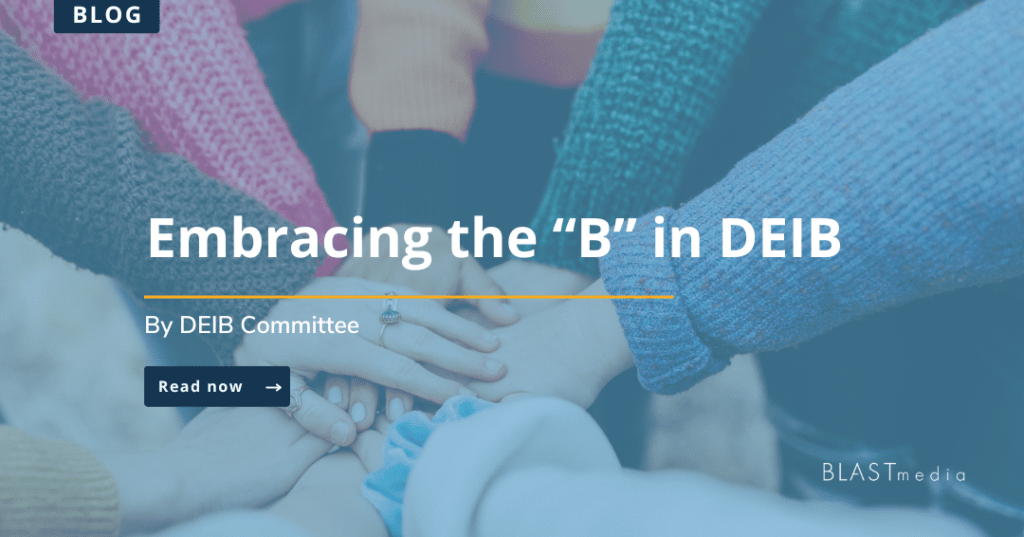
Diversity advocate Vernā Myers once said, “Diversity is being invited to the party.” Someone asks you to dance? That’s inclusion. You hit the dance floor without waiting for an invite? That’s equity. You’re comfortable asking anyone you want to dance with you? That’s belonging.
You’re likely familiar with Diversity, Equity and Inclusion, but Belonging might be new for you. To understand the import of adding “B” to Diversity, Equity, Inclusion and Belonging requires first understanding how the DEI movement started.
Growing from the anti-discrimination legislation generated during the 1960s civil rights movement, DEI focused initially on tolerance — that is, accepting integration within communities, schools and workplaces.
In the mid-1970s and well into the 1990s, its focus expanded to include multiculturalism and raising awareness of ethnic minorities’ accomplishments. While their efforts were primarily compliance-driven, companies nevertheless sought to increase diversity in their hiring practices, casting wider nets to find a broader talent pool.
Throughout the 1990s and into the 2010s, companies saw the value of hiring a diverse workforce that reflected their customer base and the focus turned to inclusion. As Millennials (Gen Y) entered the workforce, researchers began to study the importance of inclusion — and identified emotional intelligence as foundational for creating and nurturing an inclusive work culture.
By 2015, nearly 90% of Fortune 500 companies had employee resource groups (ERGs), and as Gen Z entered the workforce, the focus of DEI began to shift again. Within the past few years, it’s gotten an update — a DEIB 2.0, if you will, to include “B” for belonging.
B-lieve in belonging
It’s always been a goal of workplaces to create a culture of diversity and inclusion — where everyone feels they belong. Adding the B offers another way for organizations to emphasize their commitment to DEIB values within the corporate culture. It enables companies to elevate themselves among the competition in a tight job market for attracting and retaining talent. And it tells potential employees that a company’s values and mission align with theirs.
Too many people from underrepresented backgrounds find themselves code-switching to fit in at work. Code-switching — changing how they dress, speak, behave and express themselves — to align with workplace cultural norms is exhausting. The B, however, serves to:
- Foster a work culture that welcomes everyone.
- Empower companies to create a psychologically safe workspace.
- Encourage HR and leadership to allow all employees to benefit from internal professional development.
- Create an environment where everyone gets a seat at the table and feels comfortable challenging — not just agreeing with — ideas.
By embracing the “B,” companies reassure and invite employees to be themselves — always. Belonging means all employees feel comfortable in their own skin. And DEIB initiatives not only include everyone — they help increase innovation, performance and revenue.
Let’s recap
So how does belonging differ from inclusion? Glad you asked! But let’s recap all the definitions and how employers incorporate each into their company cultures today.
Diversity: A company’s employees represent a range of social identities, with diverse political beliefs, gender identities, religions, classes, sexual orientations, cultures and/or races.
Equity: The company champions the idea of fairly treating — and providing opportunities — for all of its employees.
Inclusion: A company’s leadership — often in collaboration with HR and a DEIB committee — develops and implements initiatives and systems designed to support and empower employees, regardless of their social identity or background, to feel:
- Comfortable being themselves.
- Involved, respected and valued.
- Treated fairly and equitably.
Belonging: Taking inclusion a step further, companies embracing the “B” focus on nurturing a sense of security, ensuring employees feel their voices matter and that they’re accepted, included and supported for who they are and what they contribute.
Belonging matters as part of a DEIB strategy
Why is belonging such an essential part of DEIB strategy? Because when people experience that strong sense of belonging, they feel genuinely part of the team and company — and welcomed to participate. Satisfaction increases. Those who feel a part of something more willingly support each other — and the company’s goals.
Promoting a culture of belonging where you work requires a commitment to ongoing process improvements company-wide from the top down (and bottom-up). Advocate for DEIB, helping every employee feel heard, seen and valued by:
- Embracing inclusivity in meetings, collaborative opportunities and decision-making. Managers should involve their teams in planning and other important decisions affecting their departments when possible.
- Encouraging people to become role models at all levels. Representing your unique, diverse workforce makes it easier for everyone to identify with their leaders.
- Cultivating diversity management throughout the entire employee lifecycle, from D&I recruitment practices through promotions to training and professional development.
- Creating diverse teams at all levels.
- Championing transparency, connecting with employees regularly, using surveys and one-on-ones to gather feedback and encouraging people to voice concerns anonymously or to their management when issues arise.
- Equipping managers with the tools they need to be appreciative, empowering, responsive and supportive.
- Charting your progress with DEIB initiatives by tracking specific DEIB metrics you’ve identified and defined.
Creating a culture of belonging
Know the secret to create a culture of belonging? It’s simple — and not so secret. It’s building a sense of community for everyone and with everyone.
Life’s already hard without wondering whether or not you fit in at work (and it’s even worse when you feel you’re not a good fit). When companies embrace DEIB, the culture shifts in a good way — in how teams work together to generate innovative ideas and creative solutions. You can’t limit someone’s personal and professional success when they feel celebrated, comfortable, seen and valued.

